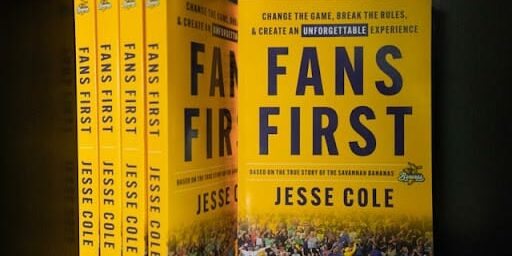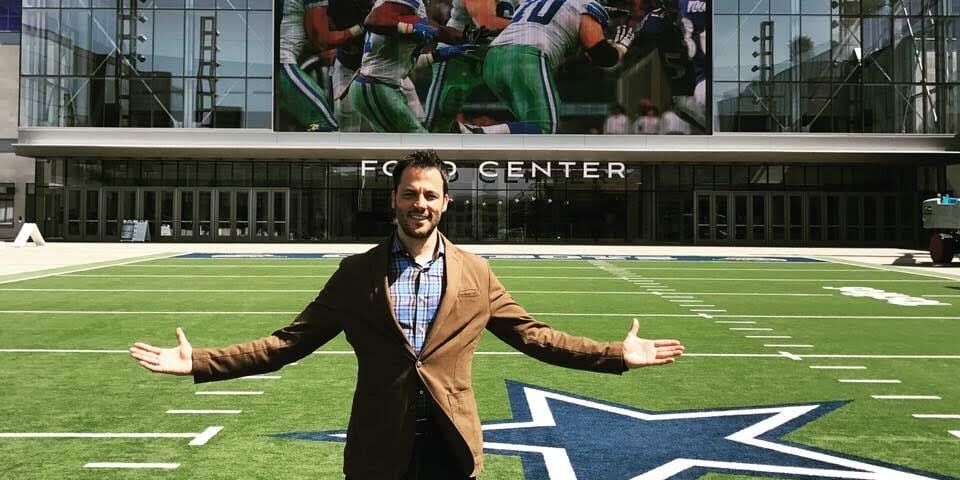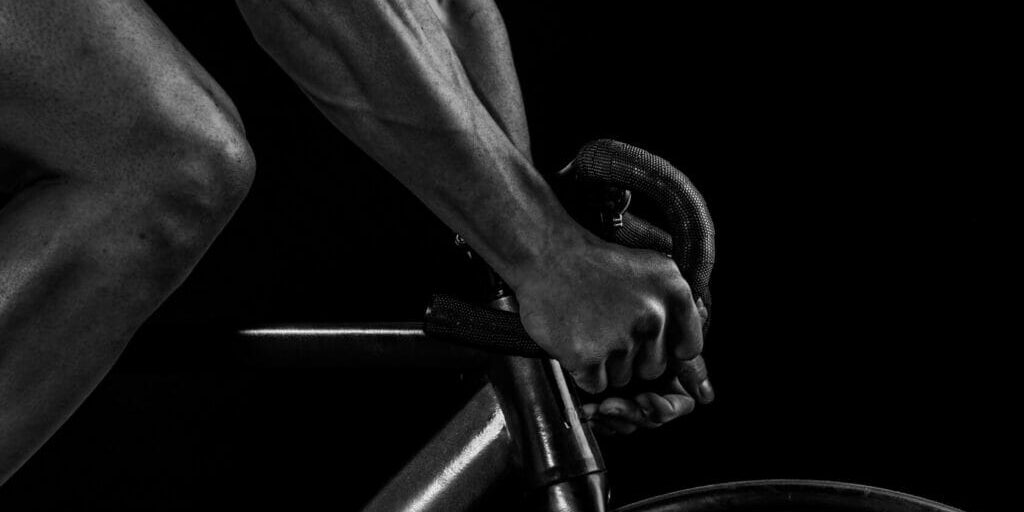“I am not an entrepreneur.” I carried around this limiting belief way too long. It kept me stuck, playing small and only developing a small portion of my creative potential. Confronting myself and shattering that false narrative was the beginning of a career reinvention that would provide plenty of opportunities to explore my creativity in ways that I hadn’t previously imagined. I was learning how to become more creative and innovative.
The pandemic was another moment that mandated confronting myself and evolving our business model in ways I would never have conceived previously. It turns out that we are quite a bit more creative than I realized, and our little breakthroughs will make our business a lot better in the future.
I want to learn how to tap into this kind of creativity and breakthrough thinking more consistently, and I couldn’t wait to get my hands on the new Josh Linkner book, “Big Little Breakthroughs: How Small Everyday Innovations Drive Oversized Results.” Josh is a true innovator who leveraged his experience as a musician and successful entrepreneur into an incredible keynote speaking business. He is now embarking on a personal mission to help more people rediscover their innate creativity and become everyday innovators. I have long admired his work and was thrilled when he agreed to discuss the vital role innovation is set to play in our lives and our world moving forward.
I hope you benefit from his insights on developing creative potential as much as I did.
What Inspired You to Write This Book?
I’ve always been passionate about creativity, and it has played an important role in my life. I started my career as a jazz guitarist, and I still play regularly. As an entrepreneur, creativity was the strength that made me shine.
I’ve been able to turn this passion into a career researching, writing and speaking about creativity and innovation. Over the course of that research, I was disturbed to repeatedly encounter this idea that innovation only counts if it’s a billion-dollar idea or that innovation only applies to certain people in certain positions. For this book, I wanted to flip that upside down. I dug deep into everything from neuroscience to behavioral psychology to emerge with a powerful conclusion: Innovation and creativity are accessible to everyone.
This book is all about helping everyday people become more creative and innovative by cultivating small daily habits of micro-innovation that, in turn, add up to big things. My mission is to help everybody, regardless of age or gender or position or anything else, extract their own creativity to realize the outcomes that matter most to them. Whether in your personal or professional life, it’s all about realizing these little, big breakthroughs — one breakthrough at a time.
How Hard is it to learn how to become more creative?
There are so many ways to innovate, and they don’t all fit into these classical notions of how creative expression looks. I think of creativity as a super-powerful laser. You can direct the laser in traditional ways — towards creating music or inventing new products — but it’s not limited to that. You can also focus that creative laser on figuring out how to clean up a broken city, reduce safety hazards in a factory, or boost customer service outcomes. You can use it to structure a better family environment for your kids or build a stronger community. It’s a universal skill with infinite applications.
It’s also a high-leverage activity in that it yields a disproportionately large set of rewards. If someone became 5% more creative, they might produce drastically better results in their job. If schools became 5% more creative, we might see radically better educational outcomes. Creativity is a uniquely human superpower: We can imagine something in the future and then figure out how to make that happen. How cool is that! We’re all trying to improve our world and our lives in big and little ways, and we all have this tool locked inside of us right now, waiting to be let loose. This isn’t about creativity for creativity’s sake — the point of developing creative potential is to drive meaningful progress forward.
What Keeps People From Cultivating This Skill?
The biggest deterrent to creativity is the perception that we don’t have time to be creative. But you can use your creativity laser to create more time.
I like to start with the monthlong 5% Creativity Challenge: You take a 40-hour workweek, and you commit to spending 5% of that time being creative. Those two hours a week are magic time you can spend solving problems, thinking about the future and inventing stuff. I’ve had thousands of people conduct this experiment in their everyday lives, and this is what happens.
The first thing I hear back is a zero percent drop in productivity. Zero. Forty hours gets magically smashed into 38 hours, and nobody misses a beat.
The second thing I hear is that those two hours in the first week felt frivolous. We are so used to spending time with our heads down, lost in our work or hammering out our to-do list, that we feel guilty taking time to step back and daydream. By the end of those 30 days, though, people report that these two hours a week are the most productive time they have spent in years.
They see a meaningful and tangible difference in themselves and their work. They start looking at the big picture, thinking about new problems and seeing faster ways to get stuff done. Not only is this time productive, though, it’s also intrinsically rewarding. Few things in life are as personally gratifying as the expression of human creativity.
What’s Another Myth That Holds Us Back From Exercising Our Creativity?
Another dominant and damaging myth says that innovation is high-risk. That’s only true if we buy into this idea that you have to step up to the plate the first time and hit a billion-dollar grand slam. That just isn’t the case — in fact, a study from Harvard shows that 72% of the United States’ GDP comes from little ideas. SpaceX is very glamorous and sexy, but the meat and potatoes of our economy stem from these little incremental ideas that drive progress forward — from these big, little breakthroughs.
That’s the beauty of the concept. If you think about cultivating tiny acts of creativity, it completely de-risks the process and makes it accessible to everyone. Many of us can afford to gamble on a $5 idea, and whether or not we benefit from it financially, we’re able to develop this skill simultaneously. These tiny bits of practice develop over time, and eventually, you get pretty good — maybe even good enough to start looking for that billion-dollar innovation.
What Role Does Learning Play in All of This?
It’s not just individuals that benefit from exerting their creative muscles. As the hard skills of the past become increasingly automated, outsourced and commoditized, the decisive variable allowing companies to win is their ability to adapt through inventive thinking and creative problem-solving.
The World Economic Forum recently released its annual Future Of Jobs Report and interviewed CEOs worldwide about the top skills needed in 2025. Four of the top five come down to creativity:
- Analytical thinking and innovation.
- Active learning and learning strategies.
- Complex problem-solving.
- Critical thinking and analysis.
- Creativity, originality and initiative.
Of those five, only the second isn’t rooted in creativity — but it’s not far off, either. The act of learning is inherently tied to creativity and innovation because the creativity machine depends so much on what inputs are being plugged into it. By watching a great musical performance or basking in the beauty of a painting or reading a new novel, you are giving yourself fresh new inputs that can help you to produce fresh new outputs. Learning is an integral part of this cultivation process.
Are Some Places More Creative Than Others?
Learning is an important source of inspiration for the creative mind, but certainly not the only one. It’s also important that we put ourselves in a place we find inspiring. That doesn’t mean finding the closest palm trees or following the herd to Silicon Valley — it means looking for the magic that exists wherever you are.
For me, that place is Detroit. I have deep roots here, and its history, liveliness and grit inspire me. It’s a city with a soul, a magical place where people build stuff. It has its own troubles and trauma, of course. In 2013, we went through the largest municipal bankruptcy in American history, and it was awful — but it also gave us the opportunity for a rebirth. A forest fire is painful when it happens, but it makes space for things to grow. Sometimes it just takes a little bit of creativity.
When my partners and I decided to start a venture capital fund based in our hometown, people told us that we were crazy. We didn’t listen — we recognized the opportunity and believed in our own creativity and the creativity of the people of Detroit. It yielded terrific results: One of the companies we invested in is a “unicorn” worth $2.8 billion. More importantly, Detroit now is night and day from the Detroit of 10 years ago. The old buildings are now filled to the brim with tenants, restaurants and art galleries. Music and liveliness fill the air, Crime is down, and rents are up. I don’t pretend to take credit for that turnaround by any means, but I am grateful to know that our nontraditional, creative approach to urban revitalization helped in the recent rebirth of Detroit as a beacon of opportunity.
You Seem to Be Talking About a Kind of Creativity That Builds on Itself Over Time.
The biggest myth of all is that creativity hits like a magical lightning bolt from the heavens and that ideas emerge fully formed and ready to launch. That just isn’t the case. Creativity is a skill, and like any other skill, it takes practice, time and commitment.
In the book, I detail Lady Gaga’s creative process. When she’s writing a new song, she spends 15 minutes vomiting raw ideas onto a page — and then two years perfecting it. The creative act is much less one of genesis than one of refinement.
My book is here to help people cultivate their creative skills and refine their innovative results. The first half of the book lays the case for creativity, with all kinds of fascinating stories and science illustrating how creativity has changed lives and created opportunities. The second half of the book is all about putting creativity into action using new techniques that I designed. It’s an eminently practical technology that I hope helps people bring their very best creativity to the surface.
Creativity is the ultimate resource — free, renewable and accessible to all. It’s about time that we started using it.
Order a copy of Josh’s new book
Are you a speaker that’s ready to drive growth, get booked, build passive income, and crush both live and virtual events right now? Join Josh Linkner and me in Nashville, TN on October 6 – 8 for a speaking bootcamp! If you’re serious about being a professional speaker, there is no other program that matches the efficiency and quality you’ll enjoy with us. You’ll walk away energized and armed for battle, ready to take on the world. Register today!






